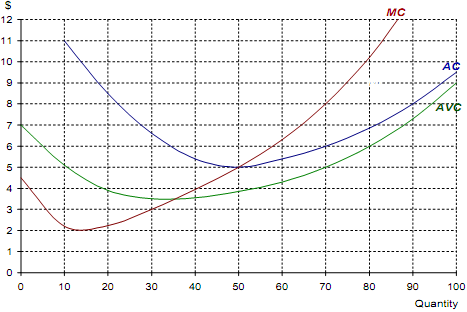Reference no: EM13937780
Question 1 :
(a) What market structure is used to benchmark allocative efficiency and why do we use it?
Illustrate and explain using a diagram
(b) Why and how do monopolistically competitive firms fail to achieve allocative efficiency? Illustrate and explain using a diagram.
Question 2 :
What will happen to the equilibrium price and quantity of butter in each of the following cases?
Illustrate with a diagram and explain whether demand or supply (or both) have shifted and in which direction? (In each case, assume ceteris paribus).
(a) A rise in the price of margarine;
(b) A rise in the demand for yoghurt;
(c) A rise in the price of bread;
(d) An increase in the demand for bread;
(e) An expected rise in the price of butter in the near future;
(f) An tax on butter production;
(g) The invention of new but expensive process, for removing all cholesterol from butter, plus the passing of a law which states that all butter producers must use this process.
Question 3 :
(a) Explain whether you agree or disagree with the following statement and why:
"Regardless of whether the short run or the long run is being considered, a firm should continue to operate as long as its price is greater than its average variable cost".
(b) Explain why you agree or disagree with the following statement:
"When marginal revenue equals marginal cost, total cost equals total revenue and the firm makes zero profit".
Question 4 :
The following diagram shows the cost curves of a firm under perfect competition.

(a) How much will the firm produce in order to maximise profits at a price of $8 per unit?
(b) What will be its average cost of production at this output?
(c) How much (supernormal) profit will it make?
(d) How much will the firm produce in order to maximise profits at a price of $5 per unit?
(e) How much (supernormal) profit will it make?
(f) How much will the firm produce in order to maximise profits at a price of $4 per unit?
(g) What will be its profit value be now?
(h) Below what price would the firm shut down in the short run?
(i) Below what price would the firm shut down in the long run?
Question 5 :
(a) Suppose the income elasticity of demand for pre-recorded music compact disks is +5 and the income elasticity of demand for a cabinet maker's work is +0.7. Compare the impact on pre-recorded music compact disks and the cabinet maker's work of an economic expansion that increases consumer incomes by 20 per cent.
(b) How might you determine whether the pre-recorded music compact discs and MP3 music players are in competition with each other?
(c) Interpret the following Income Elasticities of Demand (YED) values for the following and state if the good is normal or inferior;
YED= +0.5 and YED= -2.4
(d) Interpret the following Cross-Price Elasticities of Demand (XED) and explain the relationship between these goods.
XED= + 0.65 and XED= -3.6